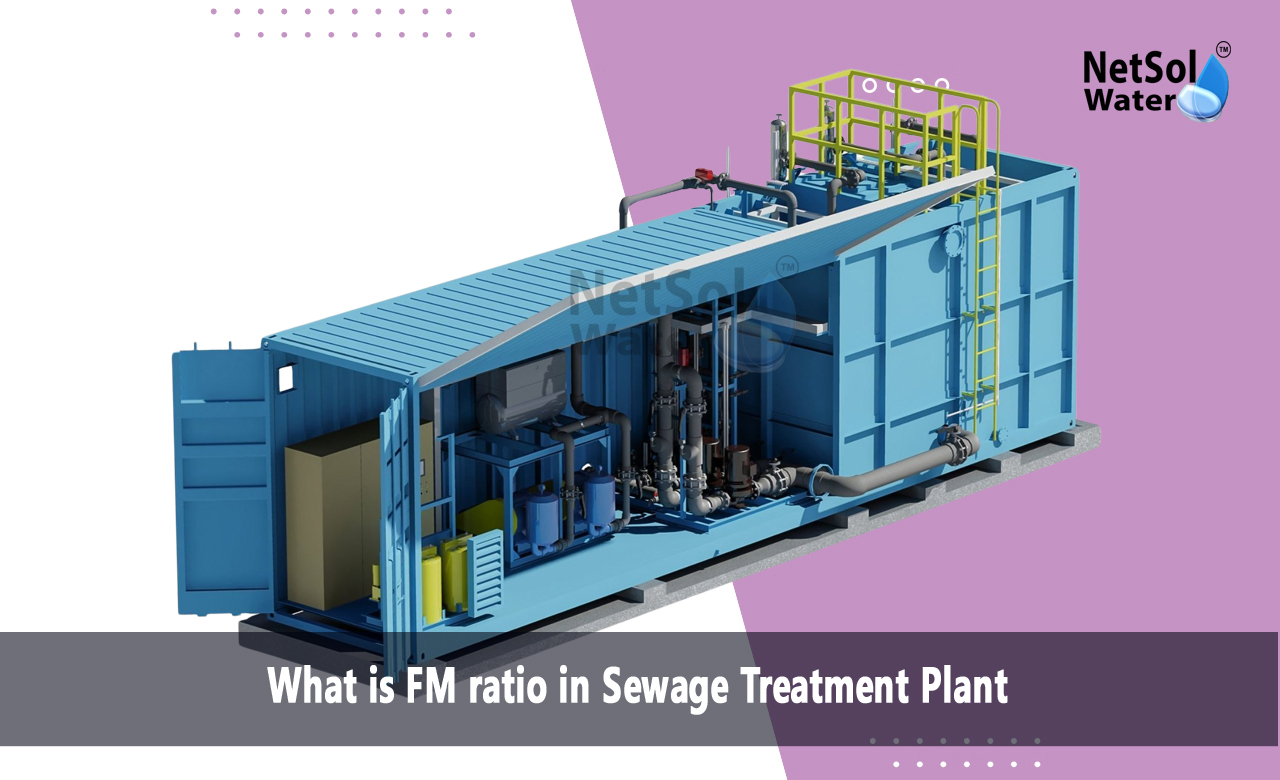What is Food-to-Mass Ratio in Sewage Treatment Plant?
The F/M ratio (Food-to-Microorganism ratio) is a key parameter of the operation of a Sewage Treatment Plant. It specifies the relationship between the amount of organic matter (food) in the wastewater and the number of microorganisms available to break it down. A satisfactory F/M ratio is essential to ensure the viability of biological treatment processes, to achieve sufficient removal of pollutants without leading to operation difficulties.
What Do You Mean By F/M Ratio
The F/M ratio is calculated by the formula below:
F/M = Q × BOD/ MLVSS × V
Where:
· Q = Influent flow rate (dilaily volume of wastewater)
· BOD = Biochemical Oxygen Demand (organic load in wastewater)
· MLVSS = Mixed Liquor Volatile Suspended Solids (mass of biomass in the aeration tank)
· V = Volume of aeration tank
The result is the amount of food supplied per unit weight of microorganisms in the system.
Importance of F/M Ratio in STP Operations
Correct F/M ratio is the key to good sewage treatment. The primary benefits are:
· Enhanced Treatment Efficiency: A balanced F/M ratio ensures proper breakdown of organic matter, leading to improved effluent quality. It helps in reducing contaminants effectively before the treated water is discharged or reused.
· Stable Microbial Activity: When the ratio is maintained optimally, microorganisms remain active and efficient in degrading organic waste. This promotes a steady biological process and prevents fluctuations in treatment performance.
· Prevention of System Imbalances: If the F/M ratio is too high, excessive organic matter can overwhelm microorganisms, leading to poor treatment. Conversely, a low F/M ratio can cause microbial starvation. Maintaining the right balance ensures the system operates smoothly.
· Reduced Risk of Bulking: Filamentous bacteria thrive in imbalanced F/M conditions, leading to sludge bulking, which affects settling and dewatering efficiency. A controlled F/M ratio minimizes the risk of such issues and enhances sludge manageability.
Consequence of Improper F/M Ratio
High F/M Ratio
· More organic material than microbial weight results in a high F/M ratio. This may result in:
· Excessive microbial growth resulting in excess sludge.
· Poor effluent quality since the waste is not completely decomposed.
· Higher oxygen requirement, requiring more aeration power.
Low F/M Ratio
Too much microorganisms compared to food available results in a low F/M ratio. This may result in:
· Inadequate microbial utilization of the available food.
· Microbial starvation, leading to less efficient organic matter breakdown.
· Sludge bulking, with sludge not settling and dewatering.
· Decreased oxygen uptake rate, leading to reduced biological activity.
How to Achieve an Optimal F/M Ratio?
For maximum treatment performance to be achieved, an STP should have an optimal F/M ratio. Some of the key strategies are:
· Regular Monitoring: Monitor influent BOD, flow rate, and MLVSS levels in order to optimize operating parameters.
· Adjusting Sludge Wasting Rate: Regulate sludge discharge to provide balanced microbial population.
· Optimizing Aeration: Supply adequate oxygen supply to facilitate increased microbial activity.
· Controlling Organic Load: Prevent rapid shifts in organic matter concentration to promote stability.
Conclusion
F/M ratio is an essential parameter in the operation of an STP and also represents directly upon treatment efficiency along with microbial well-being. Under balanced food to microorganism relation, wastewater can be appropriately treated by the plant operator, without facing process trouble. Under continuous monitoring and appropriate adjustment in the process, a well-working and effective sewage treatment plant may be achieved.
Do you need an advice or assistance on selecting the best water and waste water treatment unit? We have solutions for all your problems!
Let us know your problem, our experts will make sure that it goes away.
For an assistance or related query, Call on +91-965-060-8473



